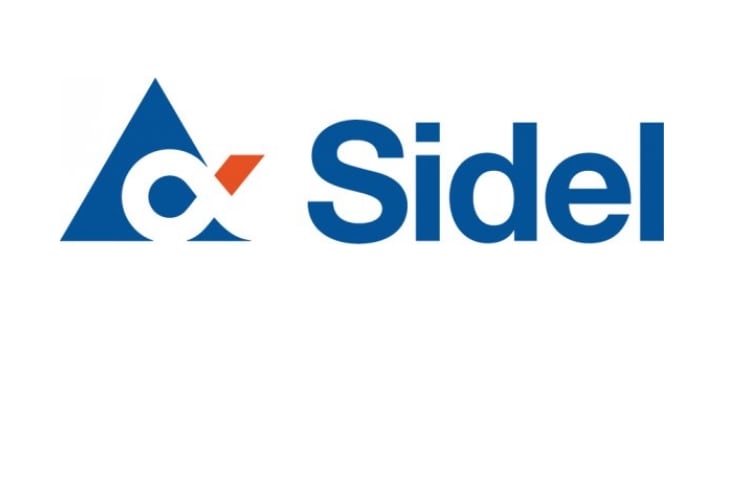To answer those challenges, Sidel can support companies switching their liquid dairy production to PET bottles and benefit from increased marketing opportunities, while leveraging a cost-effective and flexible production.
Guillaume Rolland, vice president sensitive products at Sidel, spoke to DairyReporter about the topic.

Q: How do you judge the potential of PET in the liquid dairy industry?
As the market leader in aseptic PET, Sidel can leverage a list of business successes – from notable liquid dairy companies – to explain why many industry players active in this segment worldwide have been moving their production to PET.
Perfectly defined liquid recipes and processing methods, combined with the right PET bottle and aseptic packaging solutions, can ensure maximum product integrity along the supply chain, while optimizing uptime and costs. It is important to understand why PET really is an attractive packaging material for the dairy industry, able to offer great potential in terms of product safety, marketing opportunities, as well as flexible and cost-effective production.
Q: Do you see an increasing PET adoption trend in the liquid dairy products (LDP) market?
Globally, the use of PET as a packaging material is expected to continuously grow within the liquid dairy sector. Traditionally packaged in carton or HDPE containers, liquid dairy products bottled in PET are forecasted to grow by 4.4% in the period from 2018 to 2020, according to Euromonitor (2017).
With 13.7bn package units today, PET-packaged products are estimated to reach 14.9bn units worldwide in 2020. The adoption of PET started in Europe nearly 20 years ago and has been deployed worldwide now, for chilled and ambient distribution drinks, for UHT milk, flavoured milk or soy beverages.
The trend is even bigger around on-the-go formats than around family formats. In fact, the bottle sizes up to 500ml represent more than two thirds of those PET packages, meaning 8.3bn units in 2018, projected by Euromonitor in 2017 to reach 9.6bn units in 2020.
Q: What are the main reasons for PET winning across this segment?
When packaging liquid dairy products, like white milk, flavored milk, enriched milk, plant beverages or drinking yogurt, multiple variables can influence their quality, including microorganisms, light, oxygen and temperature.
The PET growth can be credited especially to this packaging material’s 100% recyclability, its excellent barrier properties and its neck and cap tightness that ensures food safety. Moreover, from transparent to opaque solutions, PET packaging alternatives can ensure top product protection and quality, while delivering the expected shelf life without need for aluminum foil for a more sustainable business.
Q: Are there key business successes with LDP players that you can share?
It is more than two decades that dairy producers worldwide have been trusting PET bottles to refresh their brands, working with both refrigerated and shelf-stable products.
Many of them have been working with Sidel trusting our 40-year aseptic packaging expertise and more than 35 years of experience in PET production. For instance, LSDH France launched its UHT white milk in PET bottle without aluminum foil in 2007. In Brazil, Jussara switched its UHT white and flavored milk production from carton to PET, for family and on-the-go bottle formats.
Later on, this Brazilian company also launched a range of on-the-go, lactose-free products. In China, the world’s top liquid dairy producer, Yili, has released its six-month shelf life premium drinking yogurt in PET bottles.
Q: With light and oxygen affecting milk- and plant-based drinks, how can PET ensure a safe product?
It is important to highlight that PET barrier solutions ensure product safety across the supply chain, with good oxygen barrier properties, 15 to 30 times higher compared to monolayer and three-layer HDPE (High Density Polyethylene).
Regarding light protection, this is achieved through different preform manufacturing technologies and their light blocking capabilities. One of them is the injection of monolayer preform, using a standard injection tool system, mixing PET material with master batch from various suppliers.
The other one is the multilayer preform, which can be produced using either over-moulding or co-injection technologies. Those barrier solutions are adjustable in terms of additives and weight according to product recipe, bottle size, and the desired extended shelf life to be achieved.
Q: Globally, we see a trend towards functional and health-oriented drinks in different packaging with varying sizes. How can PET address these challenges and help meet the changing customer needs?
For any product type or package format released on the market, PET packaging gives the opportunity to attract consumers with great brand differentiation due to the bottle design freedom offered by the Injection Stretch Blow-Moulding (ISBM) technology and by the inherent and geometric properties of the PET raw material itself.
Round or square, asymmetric or with specific handling, its high marketing potential opens up virtually unlimited possibilities to design whatever premium or affordable package. While providing a unique communication platform for brands – that are increasingly using labels or the container itself to engage with their consumers – PET bottles are also allowing users to see the content inside, thanks to their transparency. Easy to open and handle, it is a functional and convenient type of package leading to a great consumer experience.
As market demands are quickly changing, shifting from standard bottle size towards smaller packages, PET offers sheer endless possibilities to enhance production flexibility with simple and easy changeovers on the production line while refreshing the brand of a complete bottle family from large to on-the-go formats to answer every need.
Q: To manage product diversification and SKUs proliferation, how can dairy players benefit from a flexible and cost-effective PET bottling production?
In this industry, production flexibility is particularly key in terms of product recipes, bottle formats and shapes, cap and label applications: all of that without compromising on high line efficiency over time. Low and high acid products can be bottled on the same Sidel Aseptic PET packaging line, from 0.2 liters to 2 liters formats.
Bottles can be sealed with standard flat caps or sport caps from 28mm to 38mm, including the possibility to add specific over-caps, to further differentiate the bottles. To ensure a reliable and efficient production, the line is designed to offer maximum flexibility with reduced downtime for product changeovers, and a simple three-hour cleaning and sterilization period between bottle-to-bottle productions.
Working as a versatile marketing tool, the PET bottles offer many possibilities when it comes to decoration. On top of roll-fed labels or sleeve labels, a complete sleeve covering the cap can also be used, as such increasing the communication-facing surface.
The same bottle shape can be customized with different cap colors and label decorations in order to easily multiply the SKUs with minor changes in the production process.
Q: Where do you see potential for cost-effective and eco-friendly production?
Starting from a raw material perspective, PET is the most affordable plastic available on the market, with prices that remained quite stable over the past ten years. In the PET market, the offer exceeds the demand and preform suppliers are available worldwide, both aspects contributing to a competitive supply chain.
It is also notable that the right-weighting potential in PET bottles is huge, as the water industry largely demonstrated. Sidel has been partnering with its customers to define the container’s weight requirements, able to strengthen the product stability through the supply chain, while ensuring the best consumer experience.
For instance, aseptically packaging liquid dairy products in PET via the Sidel Aseptic Combi Predis – the blow-fill-cap solution with dry preform sterilization technology – ensures packaging right-weighting since the bottle does not suffer any thermal impact due to the sterilization.
For example, the average weight of a 1 liter PET bottle for UHT milk is 24g, whereas a HDPE bottle for the same application weighs between 28 and 32g, with no possibility for lightweighting. With the good neck and cap tightness, the sealing does not require aluminum foil; consequently dairy manufacturers have less raw material and less equipment to acquire.
Using no water and almost no chemicals, the Sidel Aseptic Combi Predis globally contributed to save 7bn liters of water and 57,000 tons of PET, while producing 46bn bottles.
Q: How does aseptic fit into the equation?
The company’s Aseptic Combi Predis merges dry preform sterilization with aseptic blowing, filling and sealing functions within a single production enclosure and respects the fundamental concept which underpins aseptic packaging rules: producing a commercially-sterile product, filled in a sterile zone, in a previously sterilized package.
It differs from traditional aseptic technology because the package sterilization takes place during the preform rather than during the bottle phase. It offers many benefits including safety and simplicity, cost-effectiveness, no water and the use of very few chemicals.
More than 100 Aseptic Combi Predis installations worldwide are a clear endorsement of this technology. Sidel received Food and Drug Administration (FDA) approval for its Aseptic Combi Predis blow fill seal filler, making the solution the world’s first – and only – aseptic PET filling equipment with dry preform sterilization validated for low acid manufacturing and commercial distribution in the US market.

